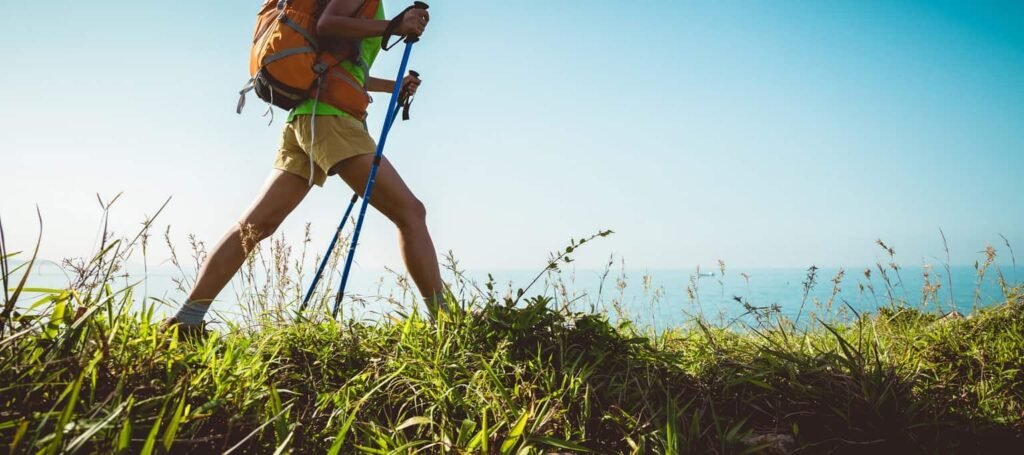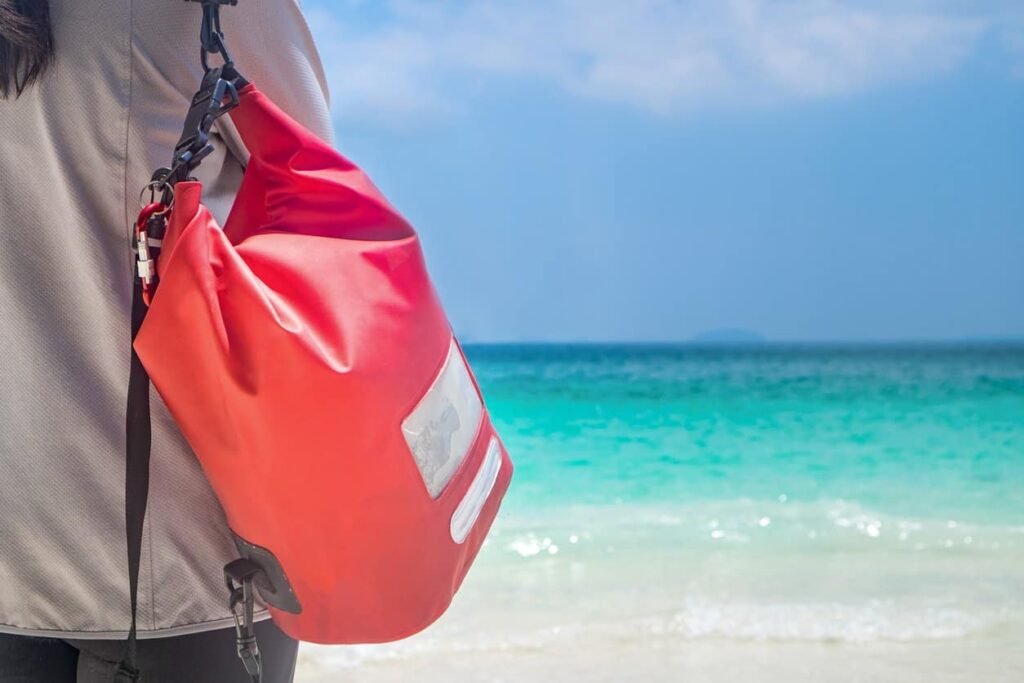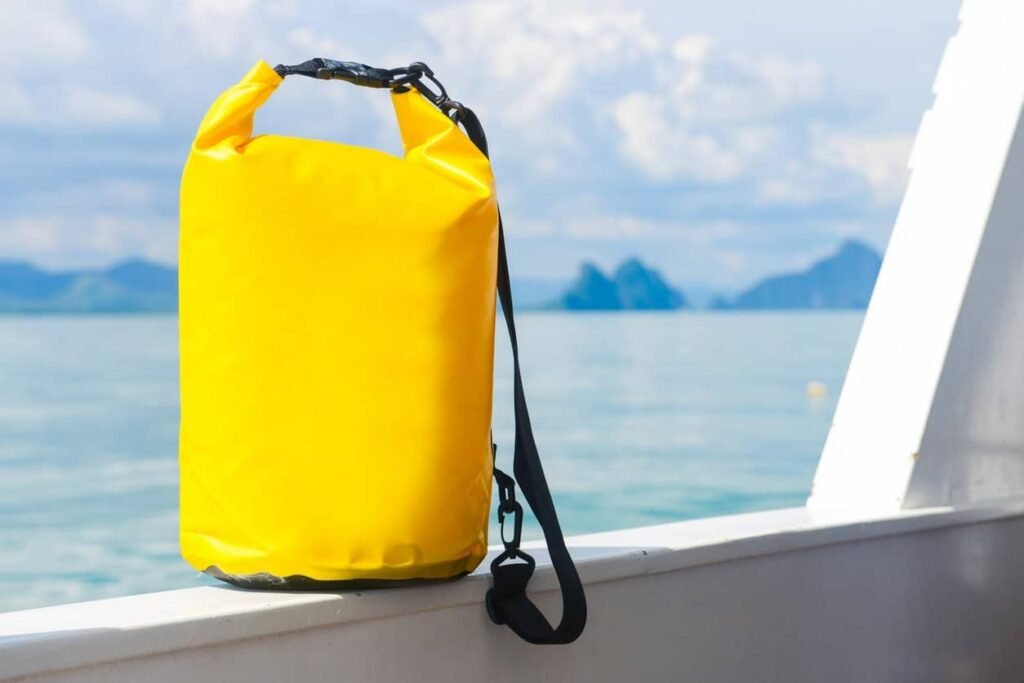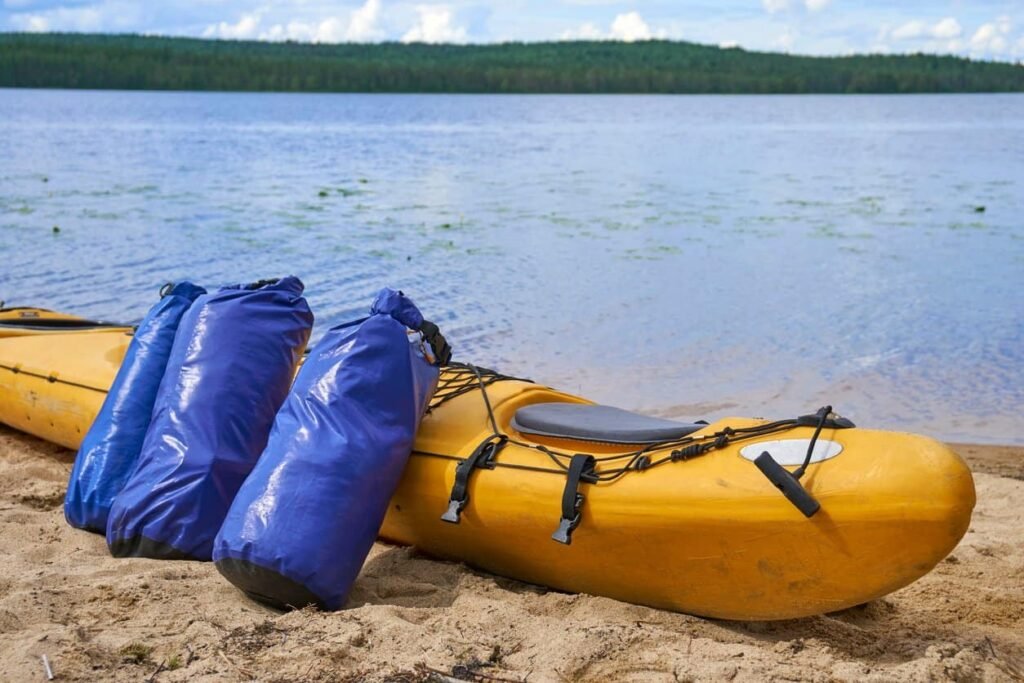
Dry bags are an indispensable tool for anyone who loves the outdoors. But what exactly are they used for? This guide will explore the myriad ways dry bags can enhance your adventures.
A dry bag is a waterproof bag designed to keep your items dry and safe in wet conditions. It’s essential for water sports, camping, and more.
Discover the full range of uses for dry bags, from kayaking trips to safeguarding electronics during rainy hikes.
Dry Bags in Water Sports

Protecting Gear on the Water
Dry bags are indispensable for kayaking and canoeing, where keeping equipment dry is crucial. They protect items from splashes and accidental submersions, ensuring that essentials like food, clothing, and safety gear stay dry. This section covers how to select the right dry bag for these activities, considering factors like size, closure type, and attachment options.
Secure Storage on Boats
In boating and sailing, dry bags offer a reliable solution for storing personal belongings and sensitive equipment away from saltwater and waves. This part discusses the benefits of using dry bags on boats, including protection from the corrosive marine environment and easy organization of gear on deck or in cabins.
Convenience for Paddleboarders
For stand-up paddleboarders, dry bags provide a convenient way to carry items without worrying about water damage. They can be easily attached to the board, offering accessibility and security. This section explores the types of dry bags best suited for SUP, focusing on lightweight and compact designs.
Safeguarding Electronics on the Water
When participating in water sports, protecting electronic devices like phones, cameras, and GPS units is a major concern. Dry bags designed with waterproof pockets or transparent windows allow for the safe storage of electronics while keeping them accessible and functional. Tips for packing and sealing dry bags to ensure the utmost protection for electronics are also provided.
Tailoring Choices to Specific Needs
This section delves into choosing the right dry bag for various water activities, from casual beach outings to competitive water sports. It includes guidance on selecting the appropriate material, size, and additional features like floatation capabilities or reflective elements for enhanced safety and convenience.
Dry Bags for Camping and Hiking

Securing Belongings Against Weather
In camping and hiking, dry bags serve as a crucial line of defense against rain, mud, and river crossings. They ensure that items like sleeping bags, clothing, and food remain dry and safe, regardless of weather conditions. This section discusses the importance of using dry bags to protect essential gear, focusing on choosing bags with durable materials and reliable sealing mechanisms for the best protection against the elements.
Streamlining Packing and Access
Dry bags not only protect items from moisture but also help in organizing gear efficiently. Color-coded or transparent dry bags allow for easy identification of contents, saving time and hassle in locating items. This part explores strategies for using dry bags to compartmentalize and organize gear, making packing and accessing items during camping and hiking trips more convenient and systematic.
Maintaining Hygiene and Preventing Wildlife Encounters
Keeping food and waste secure is a critical aspect of camping and hiking. Dry bags provide a practical solution for storing food away from wildlife and managing waste responsibly. This section covers the use of dry bags for food storage, including preventing odors from attracting animals, and their role in Leave No Trace principles, particularly in carrying out waste to maintain environmental cleanliness.
Dry Bags for Travel and Daily Use

Staying Dry on the Go
For urban commuters, dry bags offer a reliable solution for keeping personal items like laptops, documents, and clothing dry during rainy commutes. This section delves into the advantages of using dry bags in daily urban life, particularly for those who cycle or walk to work. It covers choosing the right size and style of dry bag to blend functionality with fashion in a city setting.
Safeguarding Valuables Near Water
Dry bags are not just for extreme adventurers; they are also perfect for leisure activities like beach trips, picnics, or boating. This part explores how dry bags can protect phones, cameras, and snacks from sand and water while you enjoy a day out by the sea or lake. It includes tips on selecting lightweight and easy-to-carry dry bags suitable for casual outings.
Essential Gear for Globetrotters
For international travelers and backpackers, dry bags are indispensable for protecting belongings from unpredictable weather and rough handling during transit. This section discusses the role of dry bags in keeping travel essentials safe and dry, from tropical downpours to river crossings. It covers aspects such as choosing durable, travel-friendly dry bags that can withstand the rigors of long journeys.
Versatile Use in Daily Tasks
Beyond travel and leisure, dry bags can be handy for everyday activities like grocery shopping, gym visits, or attending outdoor events. They offer a practical way to keep items dry and secure, regardless of the weather. This part highlights the convenience of having a versatile dry bag for various daily uses, providing guidance on selecting compact and stylish options that fit seamlessly into everyday life.
Specialized Dry Bags

Maximizing Efficiency with Minimal Weight
Ultralight dry bags are designed for backpackers who prioritize minimizing their load. These bags are made from lightweight yet durable materials and are ideal for storing clothing and sleeping gear. This section covers the features of ultralight dry bags, including material choices and waterproof ratings, essential for those looking to reduce their backpack weight without compromising on gear protection.
Robust Protection in Extreme Conditions
For professionals working in challenging environments, such as marine research or outdoor guiding, heavy-duty dry bags offer enhanced durability and protection. Made with thicker materials and reinforced seams, these bags can withstand rough handling and prolonged exposure to harsh conditions. This part discusses the construction and benefits of heavy-duty dry bags for professional use.
Combining Hydration with Protection
Some specialized dry bags come with integrated hydration systems, making them a great choice for hikers and cyclists. These bags allow users to store water and drink from a built-in bladder without opening the bag, keeping the contents dry and accessible. This section highlights the convenience and functionality of dry bags with hydration systems.
Buoyancy and Security for Aquatic Adventures
Floating dry bags are specifically designed for water sports enthusiasts. They not only keep items dry but also provide buoyancy, which can be crucial in water-based activities like kayaking or paddleboarding. This part discusses the design features that allow these bags to float and their importance in water safety.
Energy on the Go
For the tech-savvy adventurer, dry bags equipped with solar charging panels offer a way to keep electronic devices charged while on the move. Ideal for long treks where power sources are scarce, these bags harness solar energy to power phones, cameras, or GPS devices. This section explores the benefits and limitations of solar-equipped dry bags.
Tailoring to Individual Preferences
Customizable dry bags allow users to specify features like size, color, and additional pockets or straps to suit their specific needs. Whether for personal preference or unique requirements of a particular activity, these bags provide a personalized solution. This part covers the options available for customizing dry bags and how to go about ordering one.
Maintaining and Caring for Your Dry Bag

Keeping Your Dry Bag in Pristine Condition
Proper cleaning is essential to maintain the integrity of your dry bag. This section provides detailed instructions on cleaning different types of dry bags, emphasizing the need to remove dirt, sand, and salt residues that can degrade the material over time. It includes tips for both spot cleaning and thorough washing, as well as advice on suitable cleaning agents that won’t harm the waterproof coating.
Preserving Your Dry Bag When Not in Use
Correct storage of dry bags when they are not in active use is crucial for extending their lifespan. This part of the article offers guidance on storing dry bags in a way that prevents creasing, material stress, and exposure to harmful environmental factors. It includes recommendations on the ideal storage environment, such as avoiding extreme temperatures and direct sunlight, and the best ways to fold or roll your dry bag for storage.
Preventing Wear and Tear
This section identifies common practices that can lead to premature damage of dry bags, such as overpacking, improper sealing, and exposure to sharp objects. It provides preventative measures to avoid these common pitfalls and ensure your dry bag remains functional and waterproof for as long as possible.
Handling Minor Repairs at Home
Even with the best care, dry bags can sometimes sustain damage. This part provides DIY repair techniques for minor issues like small tears or leaky seams. It covers selecting the right repair materials and methods for different types of dry bag materials, ensuring that repairs are effective and don’t compromise the bag’s waterproofing ability.

FAQ
Q1:How often should I waterproof my dry bag?
A:Depending on usage, it’s advisable to re-waterproof your dry bag annually or when you notice a decrease in its water resistance. Learn about products and methods for effective re-waterproofing.
Q2:Can I machine wash my dry bag?
A:Machine washing is not recommended for most dry bags as it can damage the material and waterproofing. This answer provides alternative cleaning methods that are safe for dry bags.
Q3:Is it necessary to use a dry bag liner?
A:While not always necessary, a liner can provide extra protection for sensitive items. This section discusses the benefits of using a liner and situations where it might be especially useful.
Q4:How can I tell if my dry bag is no longer waterproof?
A:Signs of a compromised dry bag include visible tears, peeling or flaking of the internal coating, and water seeping in during use. Learn how to conduct a simple waterproof test at home.
Q5:What should I do if my dry bag gets punctured?
A:Small punctures can often be repaired with waterproof patches or specific repair kits. This answer provides step-by-step instructions for patching a punctured dry bag.
Q6:Can dry bags be recycled or repurposed?
A:Recycling options depend on the material of the dry bag. Discover creative ways to repurpose old dry bags and eco-friendly disposal options.
Q7:How do I properly seal a roll-top dry bag to ensure it’s waterproof?
A:Proper sealing is crucial for the effectiveness of a dry bag. This section includes a guide on correctly rolling and sealing roll-top dry bags.
Conclusion
Dry bags are an invaluable asset for anyone engaging in outdoor activities, travel, or even daily commutes in unpredictable weather. Their versatility extends beyond just keeping items dry; they provide organization, protection, and peace of mind in a variety of settings. From water sports enthusiasts to urban adventurers, dry bags cater to a diverse range of needs, proving their worth as a multifunctional tool. The importance of proper maintenance and care cannot be overstated, as it ensures the longevity and effectiveness of these bags. Whether you’re paddling through rapids, hiking through rainforests, or simply navigating city streets on a rainy day, a dry bag is an essential companion that guarantees the safety of your gear. Embrace the utility and assurance that dry bags bring to your adventures, making every journey a little more secure and a lot more enjoyable.

